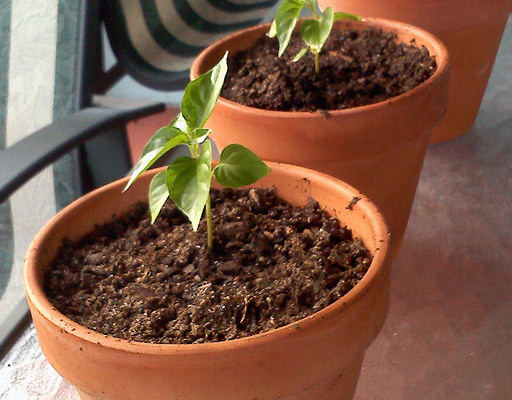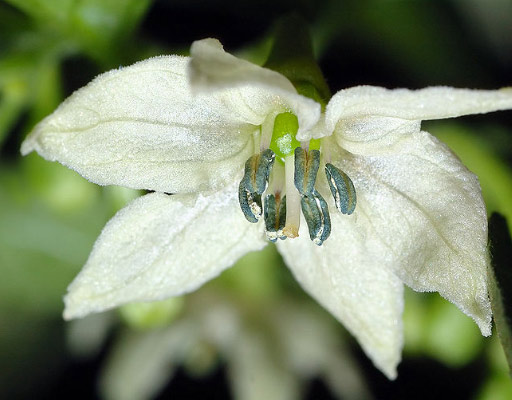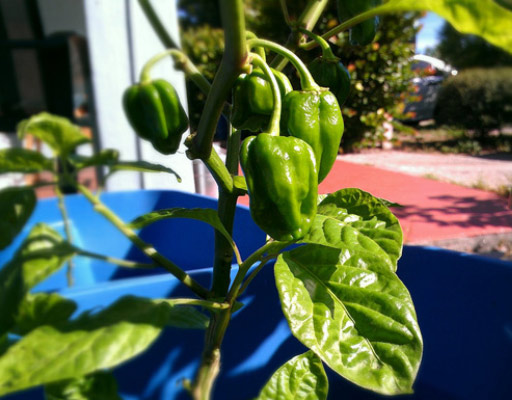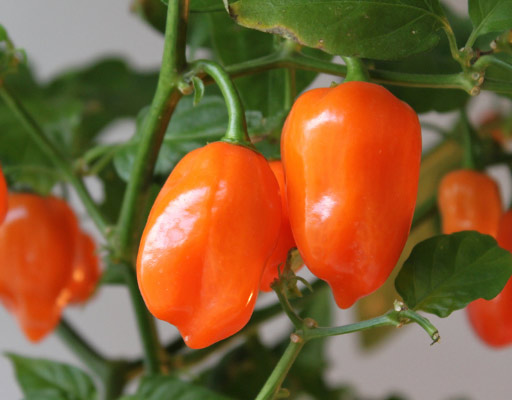Hot Peppers: The Habanero

Seedling 
Flower 
Unripened 
Fully Ripe
This heavy hitter has rightfully taken its place among the most widely used peppers in the hot sauce world. Its versatility, and unique taste make it an easy choice when preparing a sauce that will set your mouth alight, and tickle your tastebuds. There was a time when Habanero sauce was a rarity, though now with the surging popularity of hot sauce you can find a variety of habanero sauces at your local supermarket. It appears in many spicy dishes across the globe, and is also used to “Fire up” certain Tequilas and Mescal.
Popular in All Kinds of Food
The Habaneros popularity spans the entire globe, and it now finds itself on the menus worldwide. You can find them in everything ranging from gummy bears, and ice cream to pickles, and cupcakes. For those of us who are not so daring they are also found in more traditional fare such as, cheeses, sauces and dips.The list just keeps growing, as the popularity of this tough little pepper continues to rise.
Facts About the Habanero
The Habanero is a medium sized chile pepper, usually measuring in at 0.5 to 2 inches in length.,This little guy packs a serious punch with an average scoville rating of 100,00 – 350,000. In the year 2000 it held the title of world’s hottest pepper, but has since be dethroned.
Due to a case of mistaken identity it was named” Capsicum Chinese" . Despite this, it has become commonly known as the Habanero pepper. Taking its name from the Cuban capital city of (La Habana) Havana, where it was traded in abundance.
Varieties and Colors
The popularity, and demand for the Habanero has given rise to many never before seen types. These new Habaneros have been designed to be bigger, hotter and brighter than their old school brothers and sisters. Even a mild form of Habanero has been brought about with carefully selective breeding. Some different varieties include:
- Paper Lantern
- Jamaican Hot Chocolate
- Peruvian White
- Purple Habanero
- Red Dominica
- White Habanero
- Jamaican Red Hot
Weird & Interesting Trivia
- Research has shown that habaneros could possibly benefit as an anticoagulant in thinning blood clots. Thus aiding in the prevention of conditions such as stroke and heart attacks.
- Studies have shown that eating habaneros, and other chili peppers may assist in the burning of calories.
- Archaeologists have unearthed proof that the habanero has been included in the diets of human beings for over 8,000 years.
The Habanero Plant
The Habanero is hot weather pepper and grows best in drier soil. Habanero's need only be watered when their soil is completely dry. Over watered Habanero plants will produce a bitter fruit. Immature peppers will appear green in color but upon ripening most commonly appear orange or red. Though many variations do appear.
Being perennial plant the Habanero will continue to produce peppers for many years if cared for properly. In Temperate climates it will act as an Annual plant, ceasing production in the winter months.
- Check out our How to Grow Habaneros Guide, Part 1
Regardless of whether you grow your own, or buy them at your local market, Habanero peppers are a versatile and delicious choice.
Recently Added Hot Sauces that Use Habaneros:
- Jersey Barnfire - Black Garlic
- Ric Orlando's Best - Purple Haze Double Dose
- Hell's Kitchen Hot Sauce - Pepper Pastry
- Pickle Monster Hot Sauce - Spicy Boi Blend
- Tacoma Sauce Co. - Nero
- Encona - Original Hot Pepper Sauce
- El Yucateco - Black Label Reserve Chile Habanero
- Smok'N Blunt Sauce - Peach Rum Serrano
*Note that many hot sauces do not specify the type of pepper used on their list of ingredients, and instead use a general phrase like “chile pepper”, so a number of sauces on our hot sauce list may not be included.
Sources and Attribution:
- Photo (cropped): Habanero chile flower - by André Karwath aka Aka (CC BY-SA 2.5)
- Photo (cropped): Chilli Orange Habanero by Jann Kuusisaari (CC BY 2.0)
